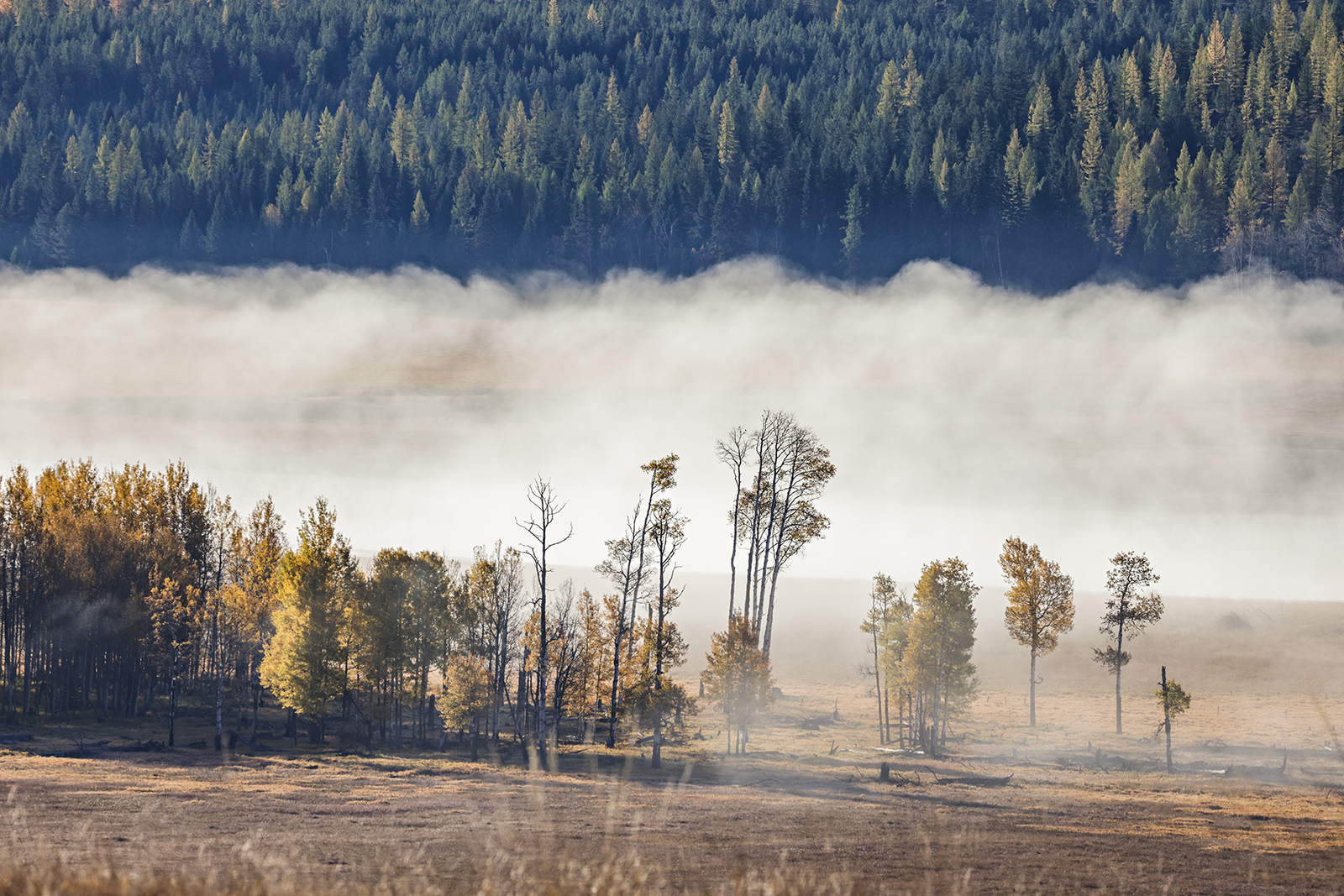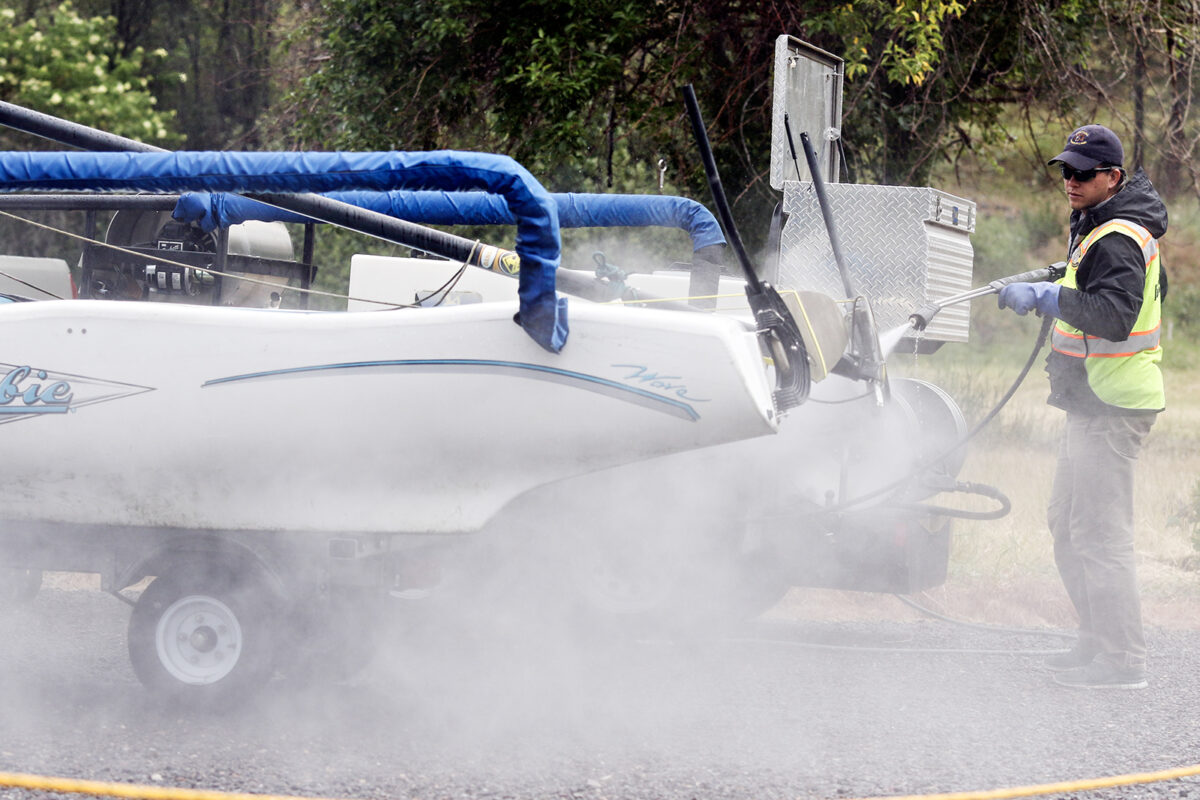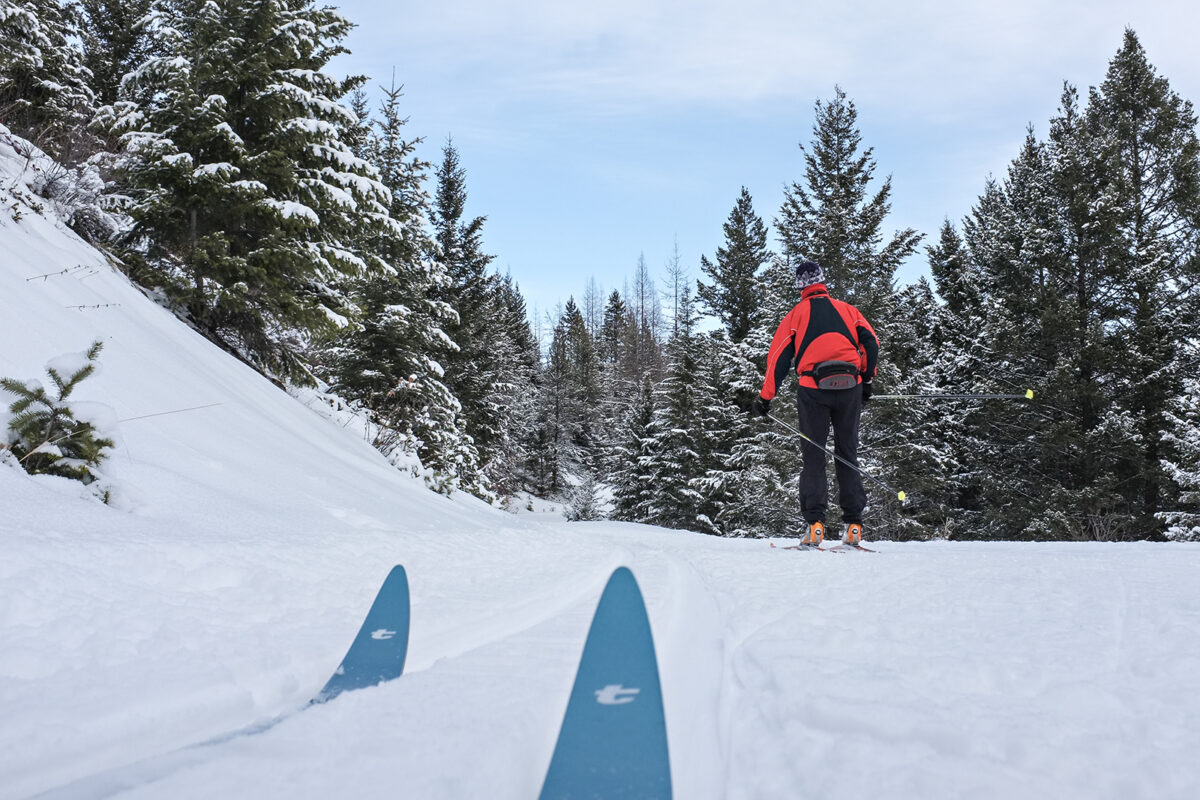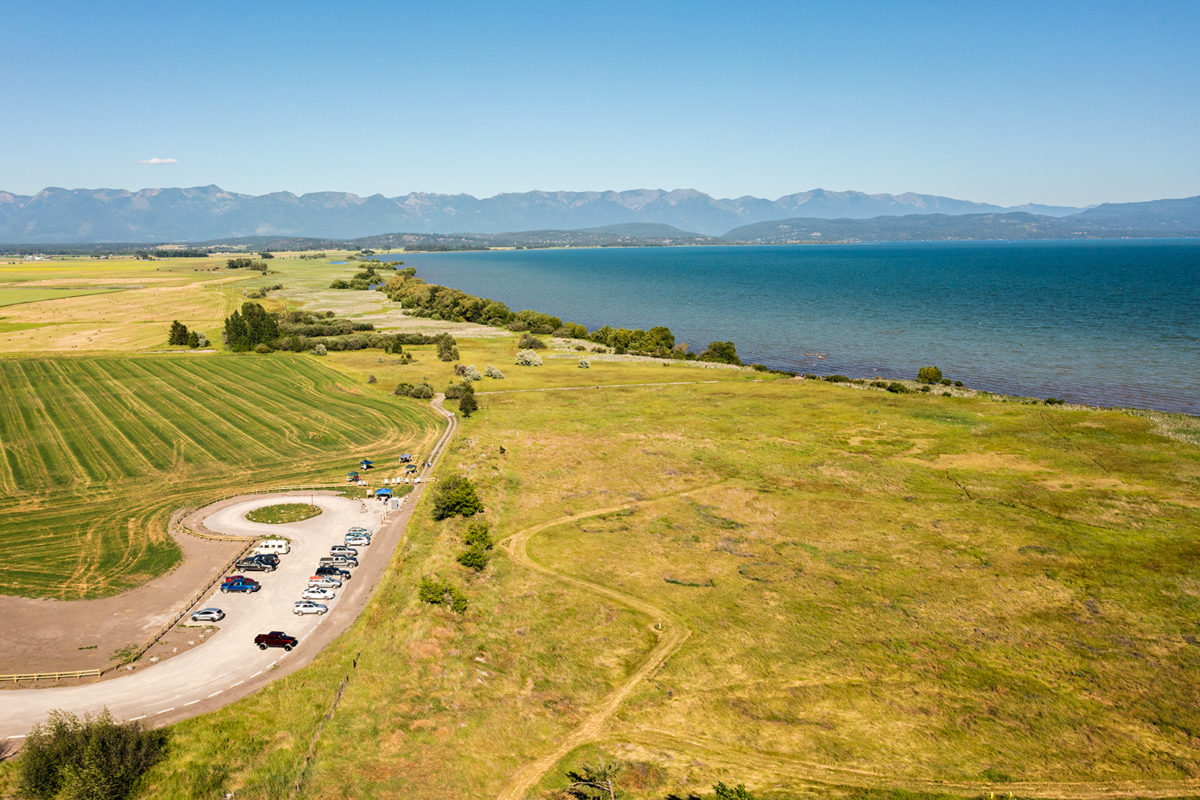The Lay of the Land Bills
As the Montana Legislature hits its halfway point, dozens of natural resource bills have emerged regarding land-use policies, outdoor recreation, fish and wildlife initiatives, and more. Some have died — like a bill to reclassify e-bikes as nonmotorized vehicles and a measure to restrict state land leases with nonprofit organizations — while others have advanced.
By Tristan Scott
When Montana’s 69th legislative session headed into transmittal break on March 7, lawmakers had introduced 1,417 bills, including 563 measures in the state Senate and 854 in the House. Among them were dozens of initiatives that would influence policies surrounding fish and wildlife management, land use, the environment, and outdoor recreation.
The range of bills included a measure diverting marijuana tax revenue away from wildlife habitat initiatives and reallocate it for drug prevention and law enforcement; another that would reclassify e-bikes as nonmotorized vehicles, allowing them on multiple-use trails; another to authorize the sale of federal land to the state; and still another to prohibit the state from leasing parcels of land to nonprofit organizations, including ski clubs, shooting ranges and veterans programs.
Here’s a review of which bills survived transmittal and which have stalled.
________________________________________________________________________

House Bill 242: A bill to double fines for trailered boats who do not stop at aquatic invasive species (AIS) watercraft inspection stations.
Primary Sponsor: Rep. Tom Millett, R-Marion (House District 2)
Status: House Fish, Wildlife and Parks Committee hearing on Jan. 28; passed committee on Feb. 13 following executive action; passed as amended on Feb. 13; passed second reading in House on Feb. 19 in 100-0 vote; passed third reading in the House on Feb. 20 in a 99-0 vote; transmitted to Senate on Feb. 20.
Substance: In the 15 years since the 61st Montana Legislature adopted the Aquatic Invasive Species Act, the fines for evading boat check stations have not been adjusted, remaining set at $500 for a first offense and $750 for a second offense. Under HB 242, the fine for a first offense would be $1,000 while a second offense could cost negligent boaters $1,500.
Montana Fish, Wildlife and Parks’ (FWP) leadership supports the measure, saying that gaining compliance from the boating public remains an ongoing challenge.
Millett, whose House District 2 is situated along a popular corridor for boaters trailering watercraft between eastern Montana and Idaho along U.S. Highway 2, said the initiative would double the fines for “boaters who dodge our aquatic invasive species boat check stations.”
“Is that tough? It’s absolutely tough,” Millett told members of the House committee on Jan. 28. “Because we can’t risk having aquatic invasive species being introduced into Montana to hurt our fishing industry, our tourism industry, our hydroelectric facilities, our water treatment plants, or any of our industries that employ thousands of Montanans and depend on clean, mussel-free water to do so. We need to send a message to everyone who wants to come to Montana that we are serious about keeping our waters clean now and for future generations.”
________________________________________________________________________

House Bill 647: A bill to prohibit state land leases to nonprofit organizations.
Primary Sponsor: Rep. Brandon Ler, R-Savage (House District 35)
Status: Tabled in House Natural Resource Committee on March 3 in a 9-5 vote.
Substance: Rep Brandon Ler, R-Savage, told members of the House Natural Resource Committee that he introduced the measure as a way to prioritize the interests of agricultural producers, including farmers and ranchers, over those of tax-exempt 501(c)(3) charitable programs. However, before continuing, he admitted that he “may have bit off more than I could chew” and promised to make amendments.
Those amendments never materialized, and the committee tabled it in a 9-5 vote on March 3.
Several proponents testified in favor of the bill, including Shelby DeMars on behalf of United Property Owners of Montana, who said “we don’t want to see nonprofits competing with individual farmers and ranchers trying to make their operations work, which often includes leasing state land.”
Opponents of the measure outnumbered proponents four-to-one, pushing back against those concerns, saying it’s unusual — if not unheard of — for a nonprofit to face any competition when bidding on a land lease.
The bill would have affected nearly 200 individual leases between the Montana Department of Natural Resources and Conservation (DNRC) and about 40 nonprofit organizations, providing a range of outdoor recreation opportunities across the state, including in the Flathead Valley.
Ryan Weiss, deputy trust lands administrator at the DNRC, said he’s not aware of any cases in which a lease with a nonprofit removed trust land from agricultural or timber production. The agency is required to generate revenue for public schools and other institutions through agriculture, grazing, commercial timber, mineral development, commercial development, and licenses, including conservation licenses for public use. In determining the “highest and best use” of state trust land, Weiss said the agency will often enter into a recreation-use lease with an organization on parcels that are classified as agriculture or timber. However, rather than remove the land from under that classification, the agency deems the uses as “compatible,” allowing them to function in tandem.
“A lot of the time, a nonprofit will lease land that’s classified as timber, or that’s classified as agriculture, in order to maintain or groom trails for recreational users. But that doesn’t remove the land from production,” Weiss told members of the House Natural Resource Committee on Feb. 26.
In Flathead and Lake counties, at least 10 nonprofit organizations lease nearly 5,000 acres from the DNRC, contributing $51,259.64 in the past year alone, according to a public records request submitted by the Beacon.
Nonprofit organizations with a state land lease in northwest Montana include: NW Montana Veterans Stand Down and Food Pantry in Evergreen; Flathead Snowmobile Association; Glacier Nordic Club, a cross-country skiing program based in Whitefish; North Shore Nordic Club, a cross-country skiing club based in Bigfork; North Valley Sportsman Club, a shooting range in Columbia Falls; Flathead Valley Disc Golf; Adventure Cycling Association; North Valley Rescue Association; Friends of the Wild Swan; and The Last Best Ride, a gravel bike race in Whitefish.
________________________________________________________________________

Senate Bill 83: A bill to extend FWP’s enforcement authority to include private lands with public access agreements.
Primary Sponsor: Sen. Denley Loge, R-St. Regis (Senate District 45)
Status: Senate Judiciary Committee hearing on Jan. 23; tabled in committee on 5-4 vote; taken from table in committee on Jan. 27; passed as amended by Senate Judiciary Committee on Jan. 27 on 9-0 vote; Passed third reading on Jan. 30 on 47-2 Senate vote; referred to House Fish, Wildlife and Parks Committee; House FWP Committee hearing scheduled March 18.
Substance: Introduced by Sen. Denley Loge, R-St. Regis, Senate Bill 83 has garnered wide support from landowners, sportsmen and conservation groups, who say it will help rebuild trust, as well as from Montana Fish, Wildlife and Parks (FWP), whose wardens have no enforcement authority on private land with open access agreements outside of hunting season.
At a committee hearing in January, numerous stakeholders testified about the need for the measure in northwest Montana, where private landowners have enrolled 650,000 acres in FWP’s Block Management program — a cooperative agreement that helps private landowners manage hunting activities on their property — including Avista Utilities, Flathead Ridge Ranch, Green Diamond Resource Company, MKH Montana, Southern Pines Plantation of Montana, Stimson Lumber Company, and Stoltze Land and Lumber.
And although landowners say 90% of the people using their property to hunt, fish and hike do so in a respectful manner that adheres to the conditions of the access agreements, a small segment of scofflaws has prompted landowners to ask for help, particularly as the enforcement onus increasingly falls on the landowners themselves.
Cameron Wohlschlegel, the land and resource manager for Stoltze, said the family-owned company has enrolled more than 10,000 acres of its land in Block Management, while it leaves open an additional 30,000 acres to public access through a long-established company policy. And while most of the problems Stoltze encounters can be resolved through education and outreach, the Flathead Valley’s rapid growth in recent years has given rise to a host of unwanted behaviors.
“Our lands have been open for over 100 years via neighborly accommodation to the public. If you have legal access, you can utilize our property for recreation based on our open lands policy, which is the governing document that authorizes use of our land for the public,” he said. “But in the summer months when we are not in Block Management, so basically anytime out of hunting or trapping season, we don’t have any enforcement capabilities through FWP on our lands. So there’s no real way to go after violators of our open lands policy, whether that’s vandalizing our land, building illegal trails, ripping down gates, cutting down trees, dumping garbage, boats, vehicles. You name it, it’s happened.”
________________________________________________________________________

Primary Sponsor: Sen. Tom McGillvray, R-Billings (Senate District 26)
Status: Senate Business, Labor and Economic Affairs Committee hearing on Feb. 25; passed as amended on March 1 in 8-4 vote along party lines.
Substance: This bill would shunt about $16 million in marijuana tax revenue away from programs dedicated to supporting wildlife habitat, trails, state parks, and recreational facilities and into a new marijuana prevention account, where proponents say it would be reallocated for treatment, prevention and law enforcement. However, opponents of the measure say it defies a budgetary blueprint that 56% of the state’s voters approved by initiative in 2020 when they legalized adult-use recreational marijuana, furnishing the state’s premier habitat conservation program with a permanent windfall.
Christy Clark, director of Montana Fish, Wildlife and Parks, testified in opposition to the bill because it would remove $1.9 million for agency programs to gather baseline data for nongame species listed as endangered or in need of conservation. Without the funds, Clark said the program would be virtually eliminated, leaving only about $40,000 in Montana taxpayer donations. The bill would also deprive the State Parks Miscellaneous Maintenance Fund of approximately $1.9 million annually, Clark said, eliminating a funding source that since 2021 allowed FWP to complete 55 major maintenance projects at state parks, costing $2.2 million.
“State parks previously had a large backlog of major maintenance projects but with this influx of revenue they have eliminated the backlog and can focus on preventative maintenance,” Clark told members of the Senate Business, Labor and Economic Affairs Committee on Feb. 25.
FWP’s trails and recreation account would also lose about $1.9 million per year.
“This program has funded 140 projects in 34 counties,” Clark said, adding that $6.1 million with matching funds has been invested in trails and trailhead facilities while more than 6,000 acres of trails “were either enhanced, maintained or built with these funds.”
Without the money, the program would be limited to granting out less than $1 million per year, “which will cut the program at least in half,” Clark said.
________________________________________________________________________

Senate Bill 387: A bill to reclassify e-bikes as non-motorized vehicles.
Primary Sponsor: Sen. Greg Hertz, R-Polson (Senate District 37)
Status: Failed on third reading March 6 in a 24-26 vote.
Substance: This is the second consecutive legislative session during which Sen. Greg Hertz has introduced a measure to reclassify e-bikes and allow local governments to regulate their use, including allowing them on non-motorized trails. As introduced by Hertz, the bill redefines e-bikes and uses the three classes of e-bikes employed by the federal government and 43 states.
“This would clarify state law and allow local governments to regulate the use of e-bikes,” Hertz stated in an email.
A host of trail and bicycle advocates coalesced in opposition to the measure, saying that allowing e-bikes in some recreation areas would create confusion on trails that thread a checkerboard of land management jurisdictions while drawing funding from a medley of public-and-private sources, some of which stipulate that non-motorized restrictions must extend to include e-bikes.
The opponents said allowing e-bikes on non-motorized, natural-surface trails would make it impossible for land managers – U.S. Forest Service and Bureau of Land Management staff, as well as park rangers and state and local trail managers – to make specific decisions about what uses are appropriate on what trails.
Jim Watson, a Kalispell rancher who helped oversee the Flathead County Trails Plan, and who was instrumental in creating the Foy’s to Blacktail Trails (FTBT) system that crisscrosses a mosaic of conservation easements held by a suite of management agencies and private landowners, said all of those trails define e-bikes as motorized and prohibit their use. If e-bikes were cataloged as non-motorized, Watson said a suite of trails systems would lose critical funding. Although Watson said Montana needs to better define and regulate e-bikes, “calling them bicycles doesn’t do it. It ties both public and private land managers’ hands for managing e-bikes. If a manager wants to ban e-bikes, they would also have to ban all bicycles.”
Jason Callahan, policy and communication director for Green Diamond Resource Company, the Seattle-based timber firm that owns hundreds of thousands of acres of forestland in northwest Montana, making it the “largest purveyor of outdoor recreation opportunities in the state,” said the measure would create a groundswell of unintended consequences.
“We currently don’t allow e-bikes on our land,” Callahan said. “If the state calls an e-bike a bike and starts allowing e-bikes where bikes are allowed, that’s a lot of cross-over, and it’s functionally impossible to communicate with the recreational user that on one segment you’re on private land and on another you’re on state land.”
Currently, e-bikes in Montana are defined as a “bicycle.” Hertz said that, under current state law, public trails in the Flathead that are banning e-bikes on bicycle trails are violating state law.
“I suspect anyone getting a ticket for riding an e-bike as defined by current state law on a bicycle trail on public land would not hold up in court,” Hertz said in the email. “Private land owners currently can do whatever they want on their private land and this bill would not have changed that.”
Correction: An earlier version of this story incorrectly stated how Montana law classifies e-bikes. Under current law, an e-bike that goes no faster than 20 mph is considered a bicycle.